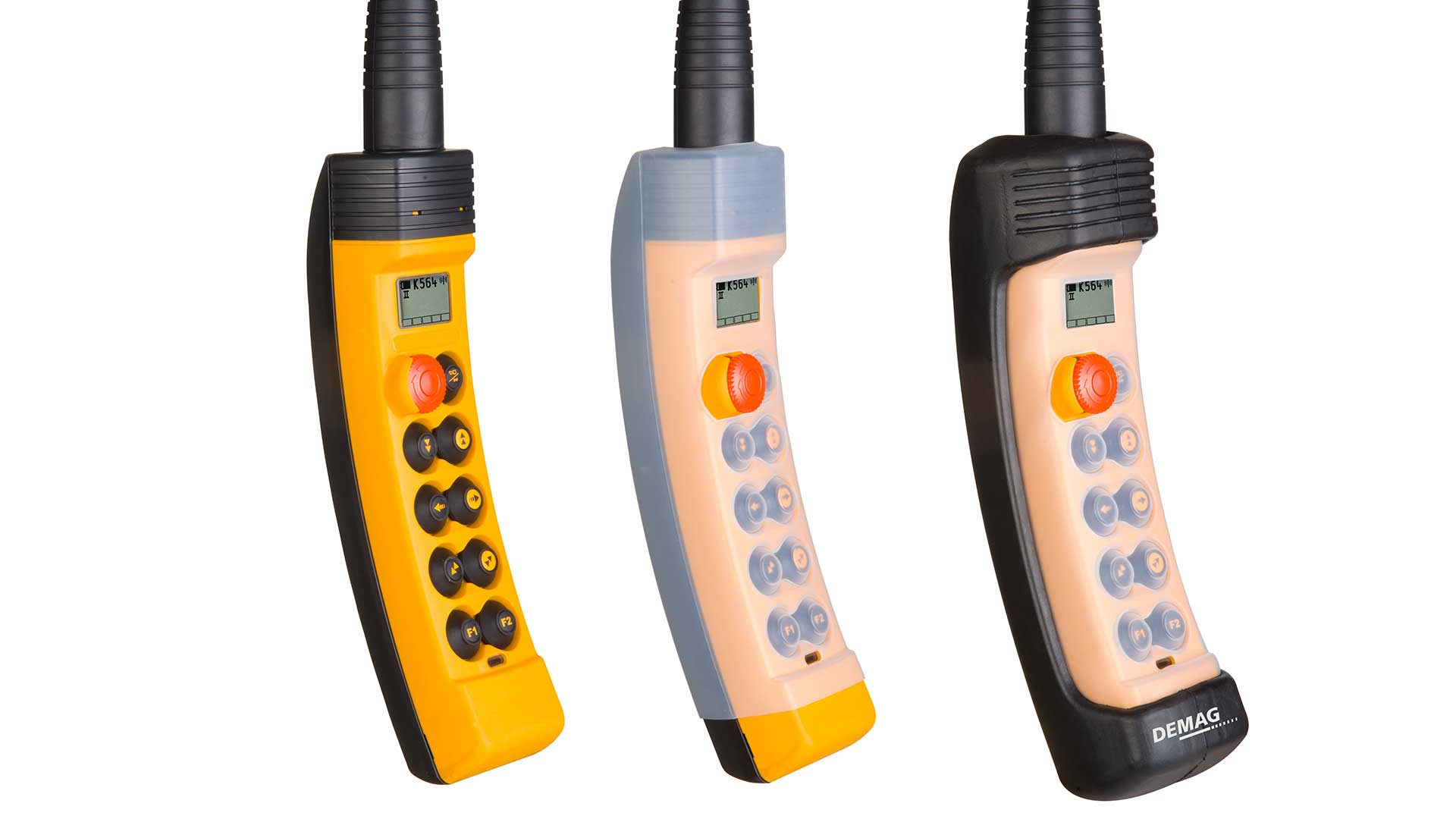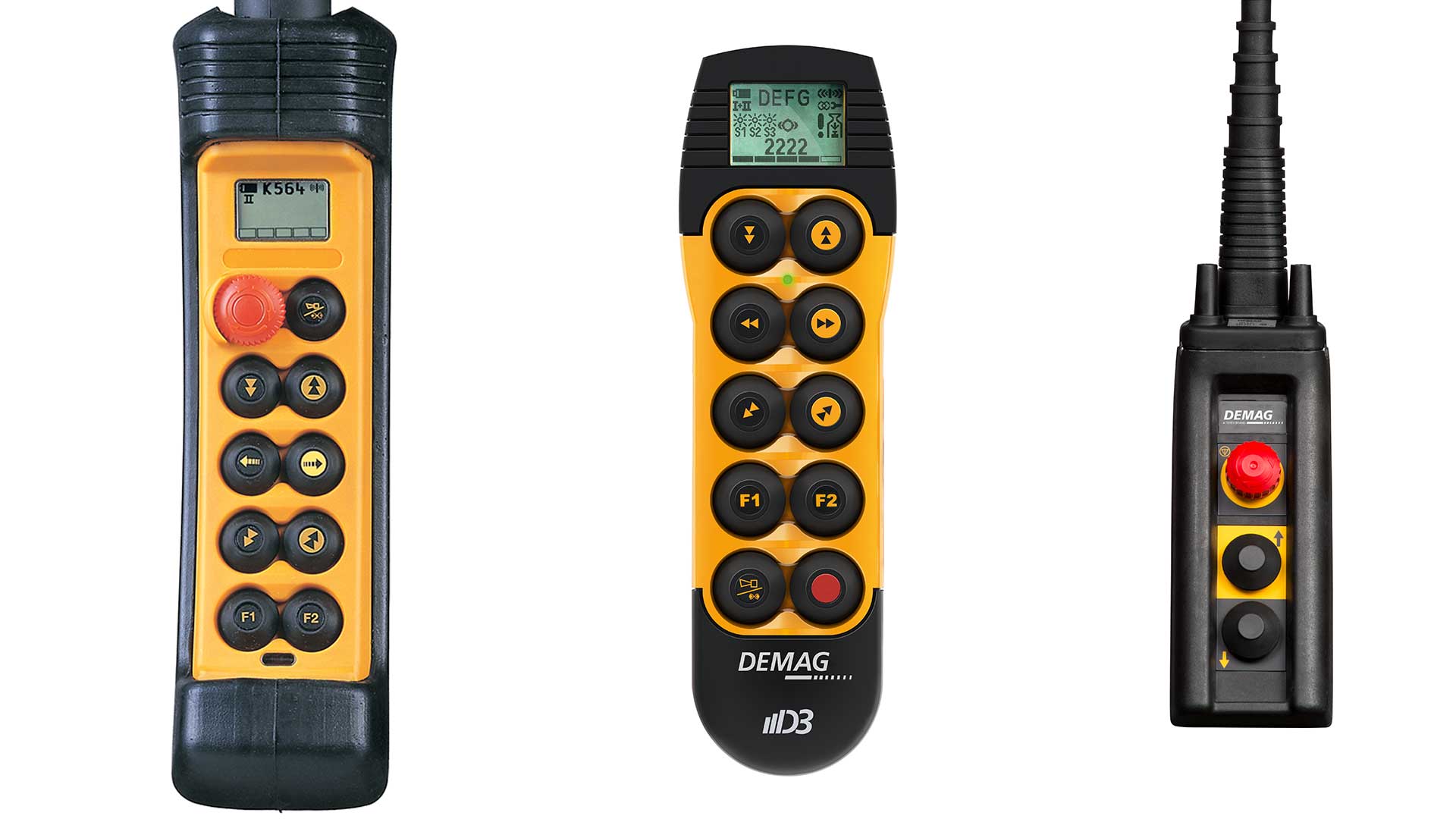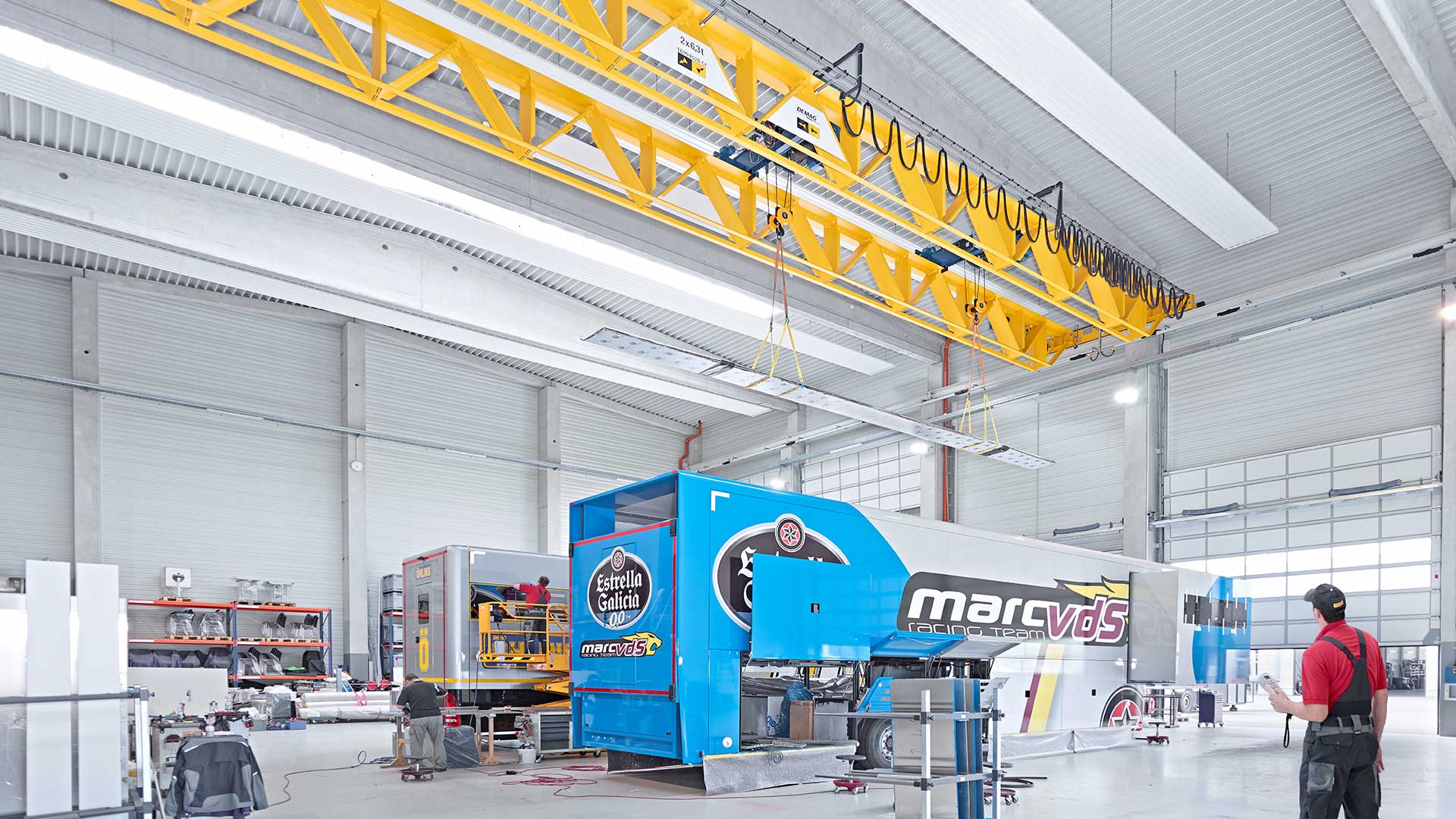Pendants are the operator’s connection to the crane. They provide the controls to make the crane do the job. Depending on what pendant you are using and your crane and hoist set up, Demag pendants can look very different. Regardless of how they look, the symbols on the buttons are standardized. All Demag pendants will have the same symbols on the buttons for the operator to use. Today we are talking about Demag pendant labels, motion direction, and why it is imperative to properly train all crane operators.
The standard symbols used on pendant pushbuttons are labels that resemble arrows and arrowheads. Whether these symbols are on the button with a decal or printed on a plate surrounding the button, these identification plates define the function of each pushbutton. Decals can be attached directly to the associated pushbutton, rubber dust protector or near the associated pushbutton, similar to DC chain hoist pendants. Demag has a wide offering of pendants and radio controls to meet your needs. Some of these pendants are made specifically for the model, for instance the DRC-DC radio remote system for DC chain hoist products. Other pendants and remotes can be used on any crane, hoist or other piece of machinery to control its movements.

Pushbutton identification can be from labels on the button or plates, like what is used on the DST control pendant, where the plate is oriented under the rubber cover and surrounds the pushbutton actuator on the face of the controller. Like any other product that uses a label and is under heavy use, sometimes the labels start to wear or peel off. One way to keep this from happening is to use the silicone protector sleeve for your pendant. This allows the labels to be protected by the sleeve from wear and tear, and other environmental impacts such as splashing water and dust.
In addition, OSHA, ASME, and CMAA require the labels always be present and legible on all controllers. These codes and standards require a standard layout of controllers with hoist, trolley, and bridge buttons in a descending order. If a crane is moving in a non-standard way, special directional names or compass directions can be ordered to substitute for the simplistic arrows. We’ve experienced some facilities taking this even further by color coding walls and installing matching colored plates onto the DST control pendants.

Standard symbols include a single arrowhead, two consecutive arrowheads, and an arrowhead with a dashed leading line. A single arrowhead simply depicts the direction and indicates one speed motion. Two consecutive arrowheads pointing the same direction indicate there are 2 speeds available for that motion. An arrowhead with a dashed leading line indicates that variable speed is available for that motion. Hoisting and lowering are easy to see as the arrows simply point up and down.

When there are pushbuttons for bridge and trolley motion, it can be tricky to discern the operator’s orientation to the crane so the operator’s viewing perspective needs to be considered when using these pushbuttons. Trolleys normally move side to side across the bridge so the labels for the trolley pushbuttons point left and right. On traditional Demag equipment manufactured prior to 2018, the right and left arrows match the actual travel direction, if the operator is standing to face the crane from the electrified side of the bridge. The electrified side of the bridge is the side where the bridge travel motors are located and mounted to the end trucks. Equipment manufactured from 2018 to today are set up opposite of the older equipment. The operator should stand on the non-electrified side of the bridge to see the push button arrows point in the correct direction.
When it comes to bridge control push buttons, the arrowhead labels are pointed at a 45 degree angle when compared to the hoist and trolley arrows. This is done to avoid confusion and allow them to stand out in comparison to the other push buttons. When the operator is standing to view the crane, if the right and left trolley arrows match the actual movements then the bridge directions (45 degree angle) of away and toward should also match the arrow direction.
It is imperative that crane operators receive training to familiarize themselves to the actual operation of the crane. Because mistakes can be made, it is also imperative that the operator check the push button label direction at start up and following the functional test steps at the start of each shift. Like all human error, electricians can make a mistake and make wiring reversals, so motions do not match the intended directions. If the push buttons are wired incorrectly for hoisting, it is dangerous since the upper limit switch will not work and this can result in two-blocking. Labels should be inspected daily and replaced when they become faded or unreadable.
Demag pendants can look very different from one another, but the pushbutton labels are standardized across the entire offering. Whether the pushbutton has directional indicators with a label or a plate, it is important that the buttons be readable for the safety of the operator and people in the area. Though some motions require the operator to be aware of his orientation to the crane, proper training of all crane operator’s is imperative. Not only will your operators fully understand the motions of the crane but will it keep your workforce safer.
- Understanding Wire Rope Lay for Your Next Wire Rope Hoist Repair or Inspection - December 21, 2023
- Diagnosing Additional Error Codes on Demag CANBUS Hoists and Cranes - March 28, 2023
- Maintenance and Service Tips for Demag KB and ZB Motors in Non-Crane Applications - February 7, 2023
